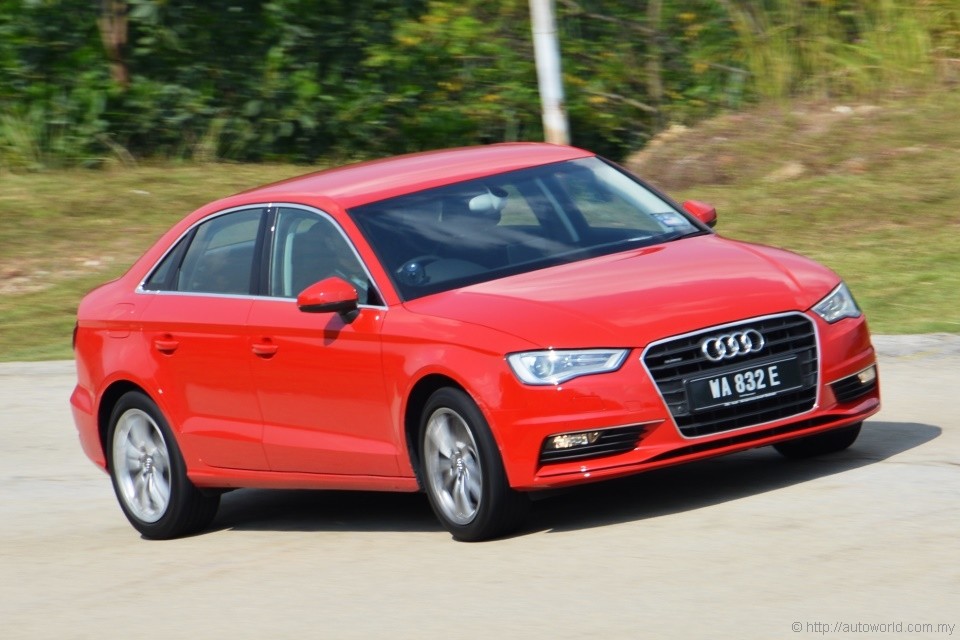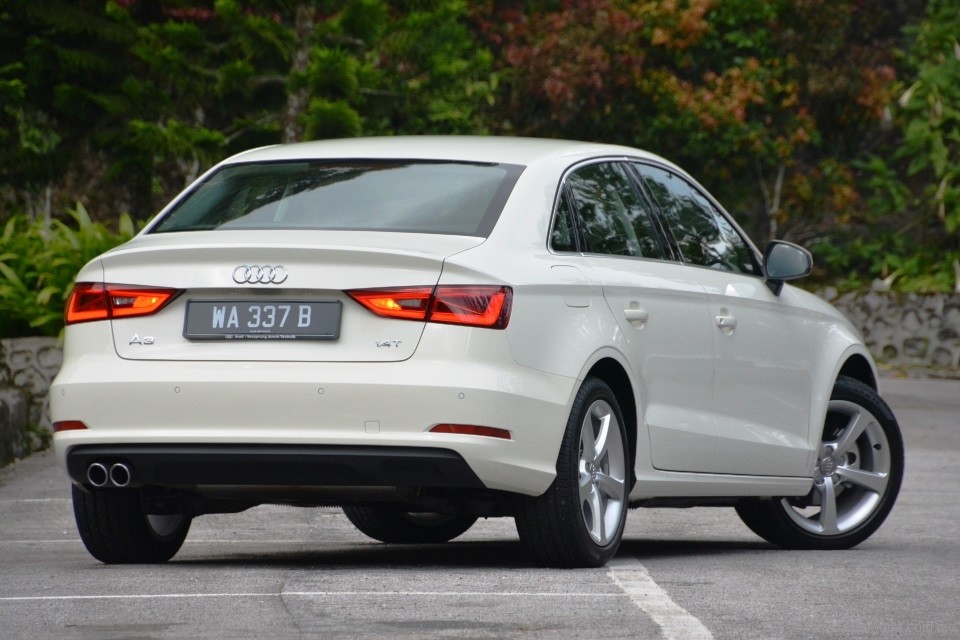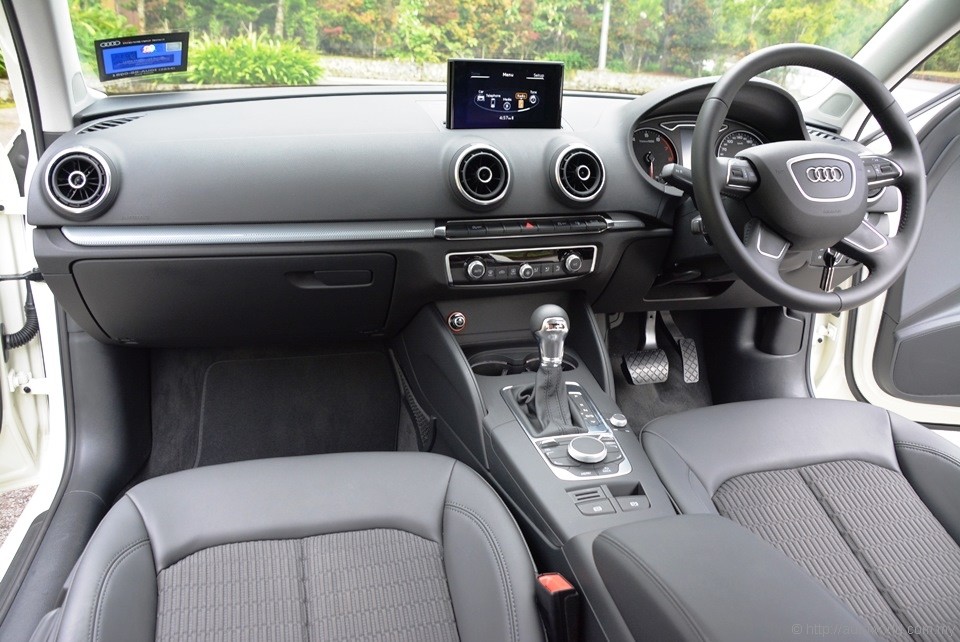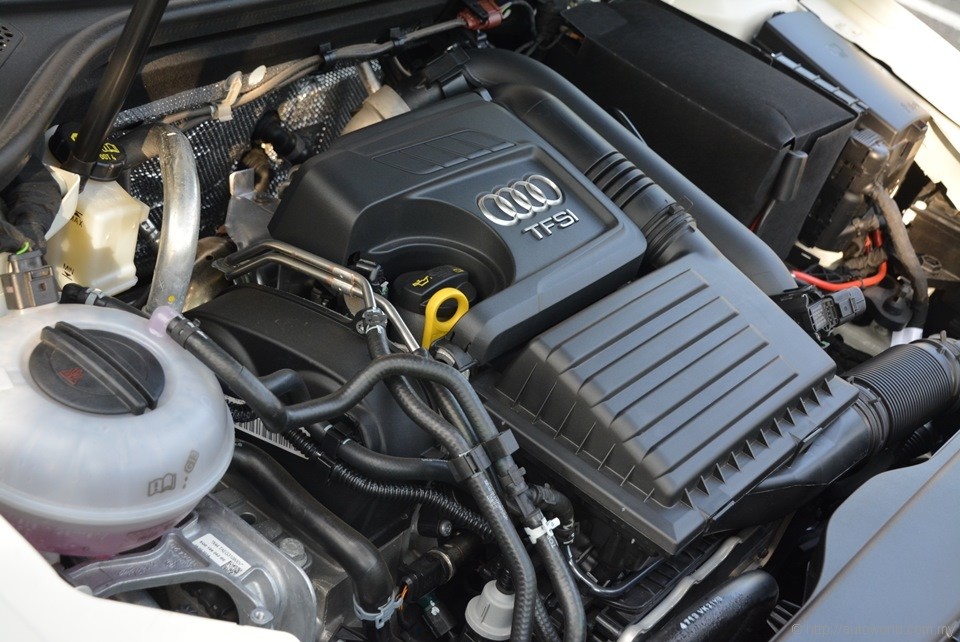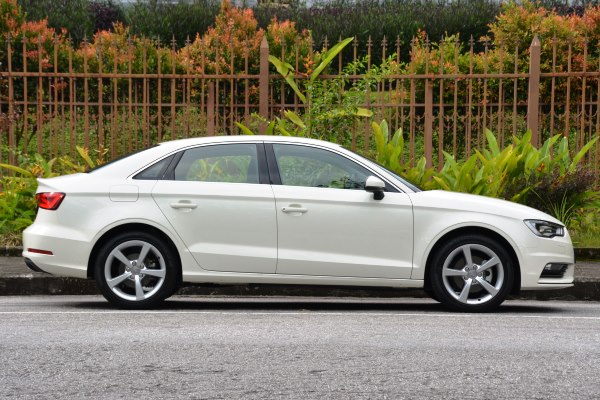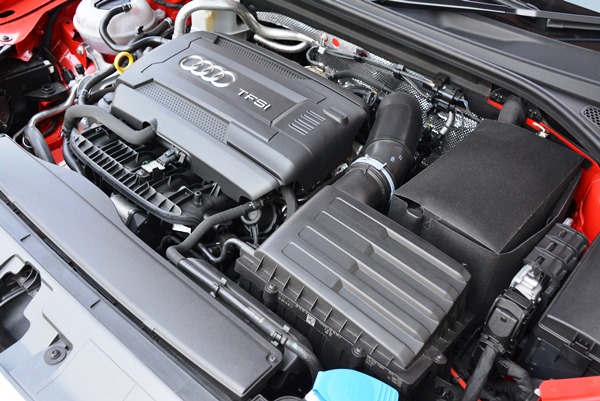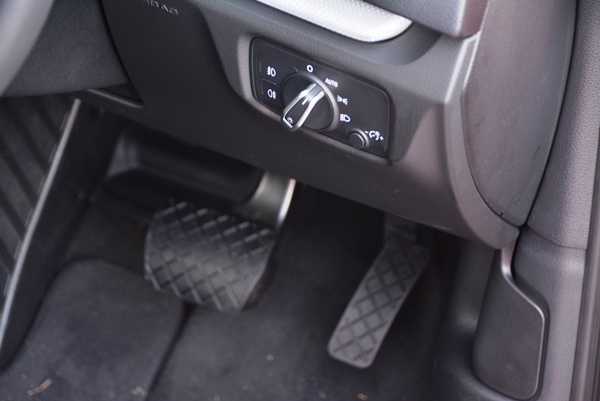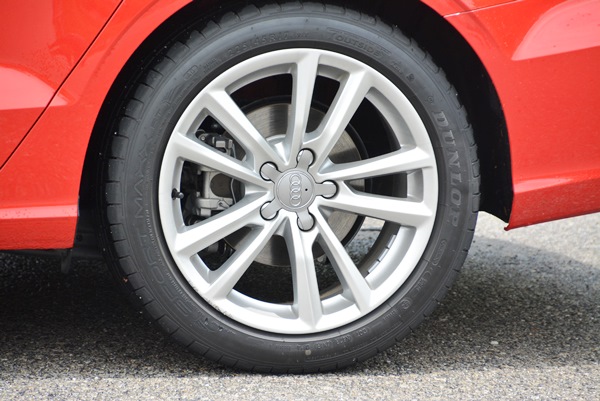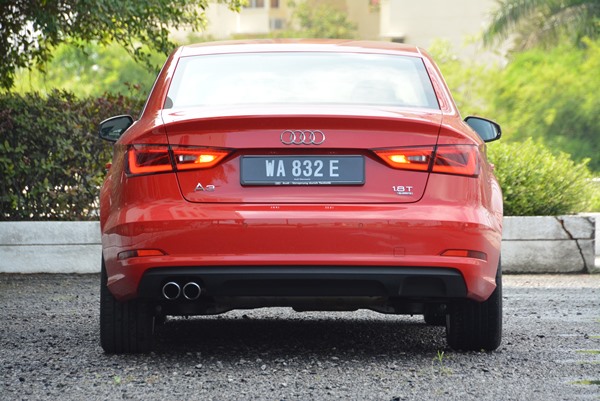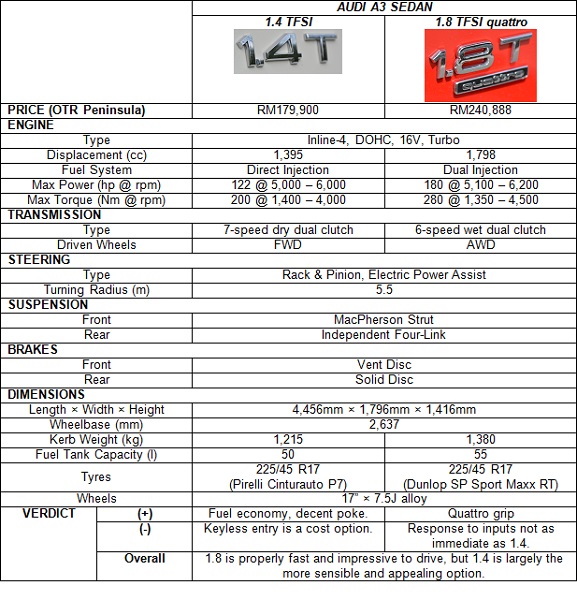Audi A3 Sedan Test Drive Review
Traditionally, entry into the realm of luxury motoring was represented by the BMW 3 Series segment in which the likes of the Audi A4 and Mercedes C-Class also compete in. In modern times, however, lines between segments have become increasingly blurred as manufacturers expand the reaches of their product line ups in multiple directions filling whatever niche they can find along the way.
Also, as cars of respective segments grow in body size, they inevitably leave gaps at the lower end of the market to be filled. The 3 Series and its cohorts have long been supplemented by smaller models beneath them, but up until recently, the likes of the 1 Series, A1, A3, and A-Class have all been hatchbacks with the odd coupe/cabriolet derivative thrown in. The traditional three-box four-door sedan has been curiously absent in this particular segment, until now.
Mercedes-Benz drew first blood in positioning a new four-door model beneath the C-Class by creating the CLA, and we most certainly won’t bet against BMW responding with a 2 Series Gran Coupe some day, especially not with Audi also having joined in the fun with the A3 Sedan, a derivative of the third-generation Audi A3.
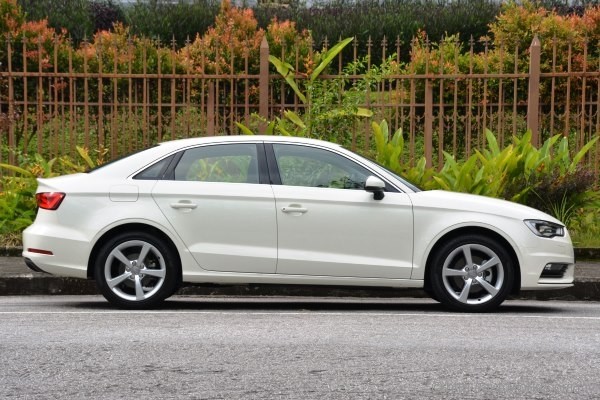 |
| Little differentiates the 1.4 TFSI and 1.8 TFSI visually. |
Prices & Variants
Despite the A3 nameplate’s hatchback origins, Malaysia gets this model exclusively in sedan guise, with two turbocharged four-cylinder engines to choose from. The range kicks off with the 1.4 TFSI at a pre-insurance OTR price of RM179,900, which is the same amount of money that would have previously gotten you the lower version of the A1 hatchback that has been quietly discontinued.
A leap of just over RM60,000 lands you the 1.8 TFSI quattro model at RM240,888, but be warned that majority of that money is being spent on hardware under the skin (namely its engine and drivetrain) rather than amenities which you can touch and feel. Beyond some aluminium trim on its door sills, electric adjusted sport front seats, paddle shifters and keyless entry, the two variants are for all intents and purposes – identically equipped. They even share the same tyre size, although tyre model and rim design differ.
By and large, the 1.4 TFSI offers satisfactory levels of equipment, but as usual, we recommend putting RM3,500 aside for the keyless entry option which, as mentioned earlier, is standard on the 1.8. The RM2,000 reverse camera, optional on both variants, is on its own an item worth going for, but because it must be specified with in conjunction with a RM13,000 sat nav upgrade of the MMI system plus a further RM3,000 for all-round parking sensors in the case of the 1.4, it becomes an understandably painful choice to make.
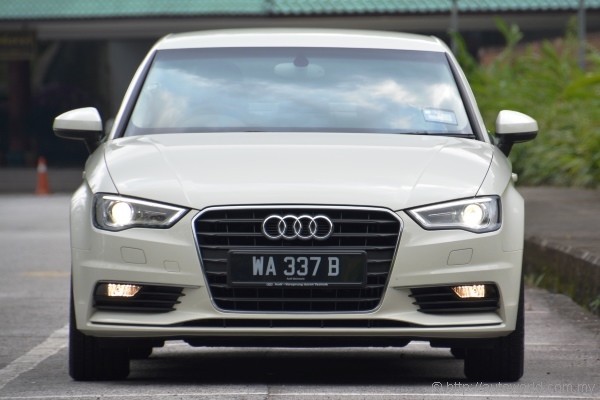 |
Specifications
The A3 family traditionally shares close mechanical relations with the Volkswagen Golf, and the latest generation is no different. Underneath the current A3’s handsome sheet metal is none other than the Golf 7’s MQB platform that will go on to underpin almost every transverse-engine model of the VW Group from as small as the Polo right up to the Passat.
Much of the A3’s running gear is unsurprisingly shared with the Golf 7, including the 1,395cc EA211 single turbo engine that powers the front-wheel driven 1.4 TFSI variant together with the 7-speed dry dual clutch transmission fitted to it. Unlike in the 138hp Golf 7 however, the same engine in the A3 is tuned to make only 122hp accompanied by 200Nm of torque generated from 1,400 to 4,000rpm. Interestingly, this is just above the cut-off point that qualifies MQB-based vehicles for independent rather than torsion beam rear suspension.
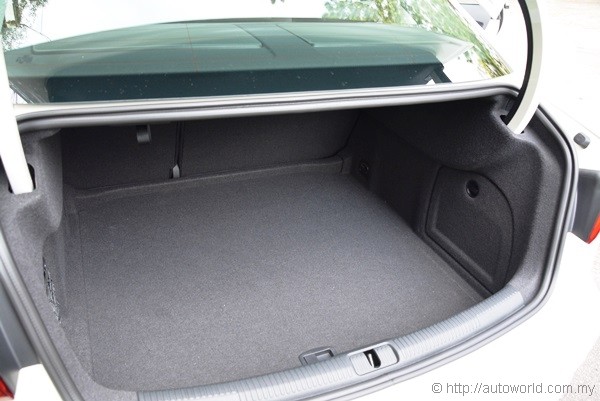 |
| Boot is deeper in the 1.4 TFSI due to absence of quattro AWD system. |
With power going solely to its front wheels, the A3 1.4 TFSI accelerates from rest to 100kph at a leisurely 9.3 seconds and calls time at 205kph. Of greater interest with this model, however, is its exceptional fuel consumption, which is rated at 4.9 litres/100km in the combined test cycle – our test car’s trip computer showed 7.6 l/100km, entirely believable since the 50-litre tank did not so much as trigger the fuel warning light even after 600km on our test run. Realistically, owners can look forward to 650-700km between refills.
The more powerful 1.8 TFSI, meanwhile, gets an enhanced version of the VW Passat’s EA888 engine that is similarly turbocharged, but featuring both direct and port injection technology to yield highly potent outputs of 180hp and 280Nm. To cope with the increased outputs and additional mechanical load required to operate the quattro drivetrain, this upper variant switches from dry to wet clutch transmission with one ratio less. The 1.8’s performance inevitably comes at the expense of frugality; Audi’s official numbers show a 30% increase in fuel consumption from the 1.4 to the 1.8, a proportion that manifested in our real world tests.
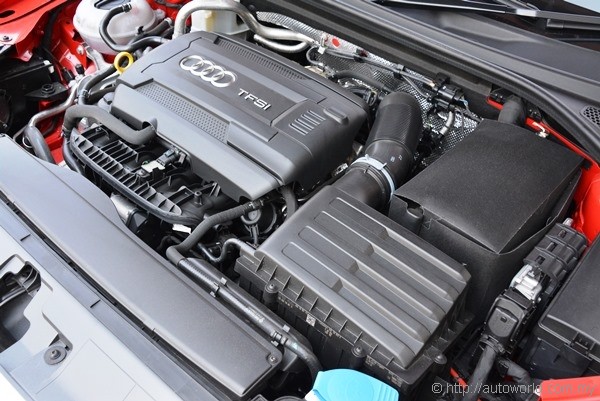 |
| 1.8 TFSI gets a more potent 180hp and 280Nm |
Exterior
Owing to their common transverse engine layout and brand positioning, the A3 Sedan and Mercedes CLA inevitably attract plenty of comparison with each other. Yet, the styling approach of these two vehicles could not be more different; whereas the swoopy CLA makes its presence felt with design language that is loud and brash, the A3 plays it safe with neat and clean lines. By and large, the A3 is a styling effort faithful to the familiar Audi template.
External cues separating the two variants are kept to an absolute minimum. Only tell tales are the badges, wheels, and bigger front discs of the 1.8 TFSI. Greater visual differentiation can be implemented by specifying the Sport edition upgrade that is exclusive to the 1.8 and offers S line bits such as a full body kit, upsized rims, Alcantara leather, and flat-bottomed steering wheel. It is a RM19,800 outlay, however, and if you actually have that kind money to up-spec the A3, upgrading the MMI system to incorporate a reverse camera will represent money better spent.
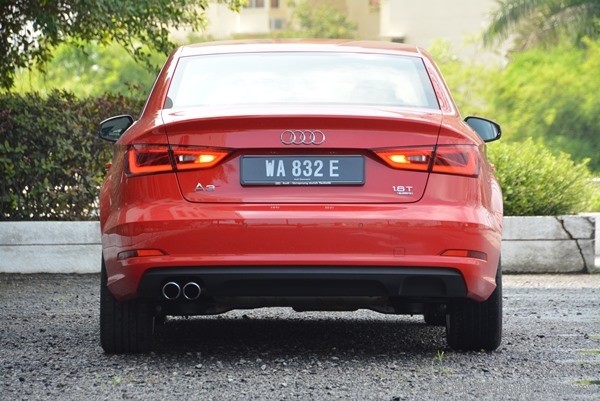 |
Interior
The close mechanical relationship between the A3 and VW Golf is not readily apparent if you were to compare their respective cabins side-by-side. Common components between the two cars are not obvious and electronic interfaces – usually the most clearest giveaway of shared architectures are beyond adequately differentiated to ensure that the A3 is appropriately presented as a very different preposition to the mass market Golf.
Just like its exterior, the A3’s cabin is a study in design minimalism of the tasteful variety. Aesthetically, it is pleasing and neat, but living with it will require some compromises – storage spaces along the centre console is extremely limited and the glove box was next to unusable, its volume seemingly just enough for the vehicle’s user manual. In this regard, we would not mind a few extra cubby holes from the Golf manifesting themselves in the A3.
Also needing a few tweaks is the MMI system’s user interface. In an effort to create clean surroundings for the cabin, the onboard infotainment system is controlled entirely from the MMI system, thus minimalizing the number of buttons needed on the dashboard. Problem, however, is that browsing through your pre-set channels or media device playlist requires navigating menus on the centre pop-up screen or the instrument panel’s multi-info display to access the relevant lists before the pre-sets can be accessed. The steering wheel frustratingly incorporates only volume adjustment as far as audio control is concerned.
 |
| Paddle shifters are exclusive to the 1.8. |
Driving Experience
Although little separates the two variants of the A3 Sedan in appearance, they couldn’t be more different with regards to the way they drive. We reckon most drivers will find the 1.4’s incredible blend of half-decent performance and exceptional economy to be both compelling and satisfying in equal measure. For spirited driving, the engine does require conscious effort to cajole, but it is game for a workout and its early availability of peak torque ensures brisk progress is no struggle.
The 1.4’s easygoing nature is contrasted by a harder-edged approach adopted by the 1.8, which requires greater commitment on the driver’s part to extract its superior performance. Where the 1.4’s 7-speed transmission can usually be left on its own devices in most driving situations, the 1.8’s 6-speed gearbox requires activation of its paddle shifters for best effect in hard driving. In the transmission’s sport mode, the wet clutch 6-speeder has a habit of holding onto gears a tad too long past the engine’s peak torque range.
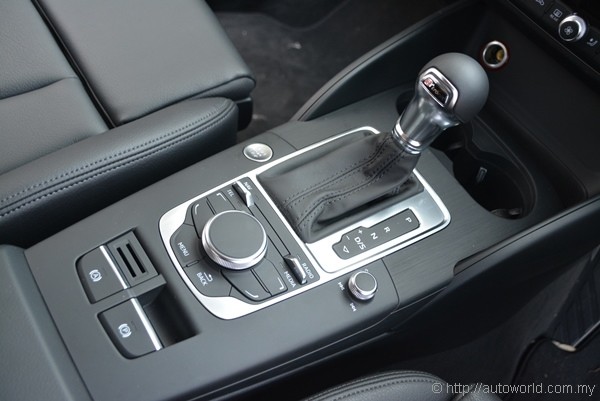 |
| 1.4 TFSI uses 7-speed dry clutch transmission, whilst 1.8 gets a 6-speed wet clutch. |
There is no doubting the 1.8’s higher all-round capabilities due to its superior outputs and AWD traction, but by and large, the 1.4 is more progressive and easier to exploit near its limits. Throttle and steering response are both marginally more immediate in the 1.4, thanks to there being less drivetrain inertia. Where the 1.4’s chassis flows fluidly around corners, the 1.8 monsters them with outright ‘grip-and-go'; which approach is preferable is a matter of choice, but we suspect the 1.4 is the more pleasant day-to-day preposition.
Ride qualities of the respective variants also present us with interesting contrasts to ponder. Even shorn of adaptive dampers that are optionally available overseas, both versions of the A3 distinguish themselves with highly satisfactory dynamics with impeccable stability and composure. If there’s anything to improve, we would say that secondary ride on the 1.4 borders on the jittery; firmer settings on the 1.8 makes it settle faster from disturbances, but neither variant actually manages the almost magic carpet ride that their sister car, the Golf 7, effortlessly manages at minimal sacrifice of its handling prowess.
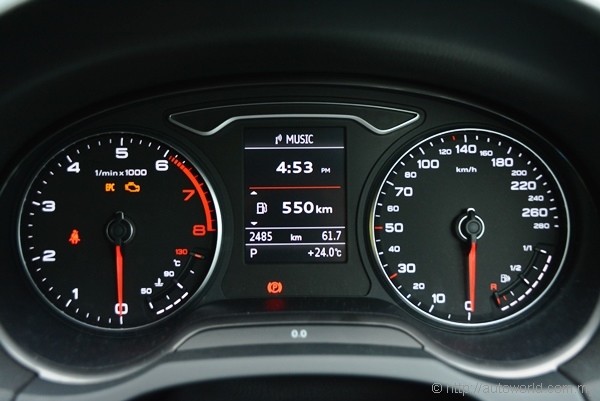 |
| Clear and legible instruments in familiar Audi style. |
Verdict
As cars of the A4 class move up in size and stature, the need to fill the vacuum below has been a long time coming, and the A3 hits the segment’s sweet spot by dangling the allure of a premium badge in a proper three box sedan with a price tag that is just within reach of upper middle-class buyers. For an entry-level German model, it is decently equipped too, although we regret that adding the reverse camera adds up to a five-figure outlay once all the prerequisite options are factored in.
Between the two variants on offer, the 1.4 is by far the more sensible and appealing option. The 1.8 has its merits, but you’ll need to be a very keen driver to exploit the advantages of its quattro drivetrain to fully justify the additional RM60k outlay on top of its considerable fuel consumption penalty over the 1.4. Relative parity in equipment between the two variants also ensure that the lower model is no poor relation of the range, making it an entirely respectable choice.
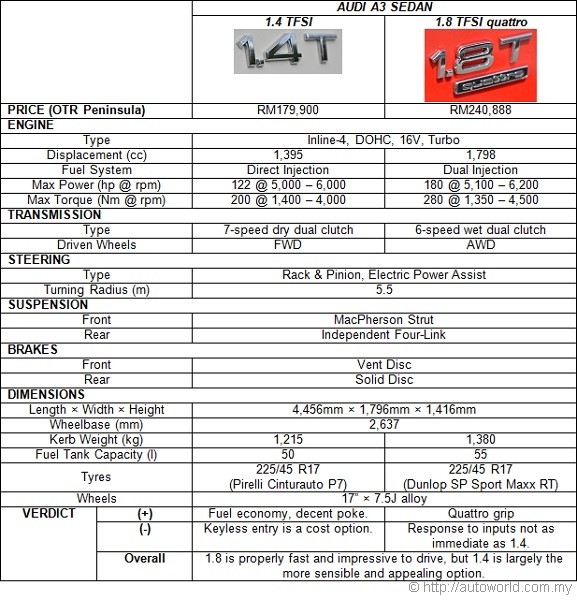 |




